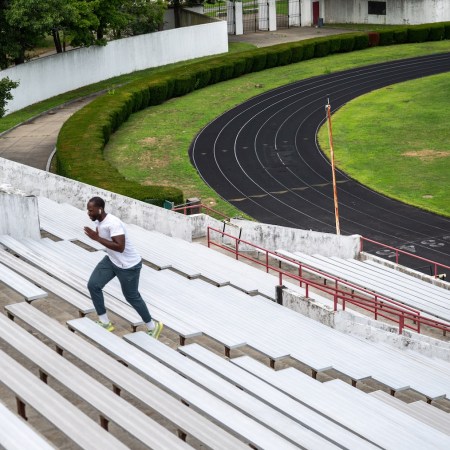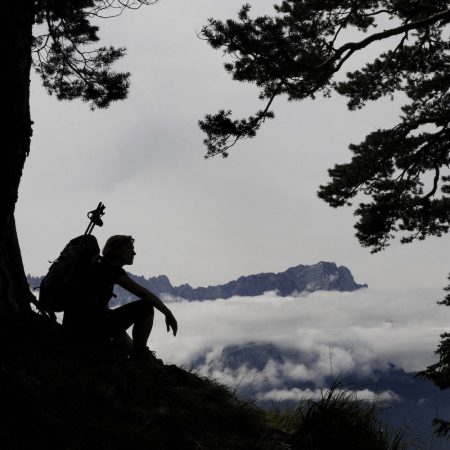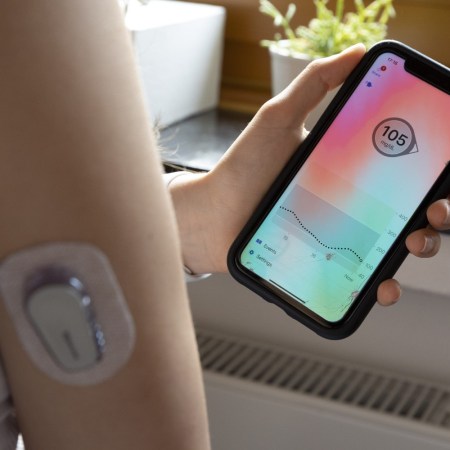Fire up the fireplace, grow out your whiskers, crack open a hefty ale … Yeah, yeah. We know.
The colder months are upon us. Just don’t get too cozy quite yet.
This weekend, more than 50,000 runners will flood Central Park for the New York City Marathon. And while 26.2 miles is impressive, we recently got in touch with someone who’ll do ‘em one better: Dave Essinger, a novelist who regularly runs races in excess of 100 miles.
Ultras, as the name suggest, are a beast. The sport necessitates exhaustive training you probably don’t have time for and stages its races under taxing elements in intense places. It became a topic of public interest back in 2009, when fitness and health writer Christopher MacDougall published the New York Times best-seller Born to Run.
And while the distance probably isn’t for you, Essinger’s training methods may at least inspire you to get off the couch this winter.
To that end, we asked him for some tips on working out in extreme conditions, what to wear for longer, colder races and why old guys have an advantage over long distances.
Hope you have a decent pair of sweats.
You get better with age …
“I first got into ultras training over distance for marathons. A lot of runners are going longer as they get older and can’t keep getting faster. I’m probably not going to ever set a personal record in a 5K again, but I can keep finishing 100-milers. In my experience, the Masters groups — 40s, 50s and over — are the toughest guys on the course. They keep going long after the kids have blown up.”
Ultra burgers?
“You want to get your body used to spending that much time on your feet, and running through the night while sleep-deprived, and eating — a lot — while you run. I know guys who will eat the biggest greasiest burger they can find on a hot day and then go for a hard run, just to condition your stomach. If you can’t keep putting in calories, and processing lots and lots of fluids, you’ll have a really hard time finishing a 100. You can’t get through something that long on gels, like you would a marathon.”
What to put on your feet
“Maybe some people are running well on minimalist stuff and zero-drops and flip-flops, but most of us don’t have the perfect biomechanics or the patience to do that right, and we’ve probably screwed ourselves up irreparably by running for years in big shoes. Watch kids run sometime, though, and go run a few laps barefoot yourself: it feels great, and can fix a lot with your footstrike. Hokas makes wide sizes. I’m liking their maximalist build, and they’re very popular in ultra distances. In a trail shoe, you want a sturdy footplate to protect against rocks and roots, a firm toe for inevitably kicking said rocks and roots, deep lugs for gripping rough terrain, and good drainage. No shoe will be waterproof, so might as well let all that mud and wet squish out as you run.”
On managing crazy weather …
“When it’s very windy, I’ll stick to trails instead of open roads. I’d prefer snow to cold rain, and sun makes anything better. If you’re running outside in the cold, invest in moisture-wicking tech warm gear [Editor’s note: see below], and consider trail shoes for icy roads, with their better grip. You can also get attachable spikes for your regular shoes, or make your own by drilling short sheet metal screws into your soles. If the weather’s just miserable, though, I’ll work out inside on the elliptical as a form of cross-training.”
On when to turn around and go home …
“We had an Arctic Vortex in the Midwest a few years back. I went out in a windchill of 26 below, in hip-deep snow. It was wild! I turned back because I couldn’t breathe in the wind, or keep up enough motion through the snow to generate any body heat. For a second I thought I was going to die in a snowdrift in a field half a mile from my house.”
Something to file away for next summer
“I like the heat a lot better than the cold. I get out when it’s hot on purpose. If you can stay hydrated, heat-training is great — some studies show it’s at least as beneficial as altitude training for cardio strength, VO2 max, and increasing blood plasma volume. Basically, training in heat or altitude are both like legal blood doping.”
When to call it quits on a pair
“I track my mileage on all my shoes. Quitting on my latest pair around 2,000 miles or so.”
And below, five great pieces of gear for keeping your workout outside this Fall/Winter …
Nor’easter Running Jacket
We’ve recommended Tracksmith before, and for good reason. The designers went to Switzerland to find some serious fabric that would move well with runners, and repel rain, sleet and snow.
Brooks National Park Trail Shoes
These guys dropped a couple months ago. A solid chunk of proceeds go to the parks we love, and that thick design is perfect for tackling rugged trails in the colder months.
The North Face ETIP™ Glove
The North Face is usually at the top of any cold gear list. Grab a pair of these midweight fleece gloves, with touchscreen capabilities, and hit play.
Garmin Forerunner 735XT
This vibrant display here will chart VO2 levels, lactate threshold and all sorts of other data, in addition to logging your run. And you can take it swimming … so you know it’s also good in the snow.
Patagonia Crosstrek Bottoms
Built for thirty and below, the Crosstrek Bottoms combine Patagonia fleece with a tapered bottom and a zippered slot for your tunes. An ideal combo of warmth and mobility.
The Charge will help you move better, think clearer and stay in the game longer. Subscribe to our wellness newsletter today.
























